"America's Favorite Architecture" is a list of buildings and other structures identified as the most popular works of architecture in the United States.
In 2006 and 2007, the American Institute of Architects (AIA) sponsored research to identify the most popular works of architecture in the United States. Harris Interactive conducted the study by first polling a sample of the AIA membership and later polling a sample of the public. [1]
In the first phase of the study, 2,448 AIA members were interviewed and asked to identify their "favorite" structures. Each was asked to name up to 20 structures in each of 15 defined categories. The 248 structures that were named by at least six of the AIA members were then included in a list of structures to be included in the next phase, a survey of the general public. The survey of the public involved a total of 2,214 people, each of whom rated many photographs of buildings and other structures drawn from the list of 248 structures that had been created by polling the architects. The public's preferences were ranked using a "likeability" scale developed for the study. [1] [2]
As part of the commemoration of the organization's 150th anniversary in 2007, the AIA announced the list of the 150 highest-ranked structures as "America's Favorite Architecture". New York City is the location of 32 structures on the list, more than any other place. Of the 10 top-ranked structures, 6 are in Washington, DC, which is the location of 17 of the 150 structures on the complete list. [2] Chicago has 16 structures on the list.
The 150 top-ranked structures are listed below. [3]
When it was released, critics observed that the list of "favorites" did not reflect the judgments of architectural "experts". Upon the list's release, AIA president R. K. Stewart acknowledged that the rankings did not represent architects' professional judgments, but instead reflected people's "emotional connections" to buildings. [4] Buildings named by critics as being some that architects consider to be highly significant, but that did not achieve top 150 ranking in the public survey, included the Salk Institute in La Jolla, California, designed by Louis Kahn; the Inland Steel and John Hancock buildings in Chicago; Washington Dulles International Airport in Chantilly, Virginia, designed by Eero Saarinen; and the Seagram Building in New York City, designed by Ludwig Mies van der Rohe. [4] [5] John King of the San Francisco Chronicle pointed out that in 1991 the AIA had named Eero Saarinen's design for Dulles Airport as one of ten "all-time works of American architects." King noted that the public's ratings were based on seeing just one photo of each building, and pointed out that "There's more to architecture than a picture can convey." [4]
The 98 buildings that were listed by architects as significant, but did not rank in the top 150 in the public vote, were: [4]
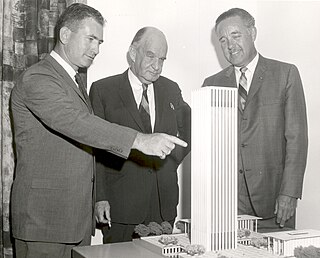
Edward Durell Stone was an American architect known for the formal, highly decorative buildings he designed in the 1950s and 1960s. His works include the Museum of Modern Art, in New York City; the Museo de Arte de Ponce in Ponce, Puerto Rico; the United States Embassy in New Delhi, India; The Keller Center at the University of Chicago; the John F. Kennedy Center for the Performing Arts in Washington, D.C.; and the EcoTarium, formerly known as the New England Science Center in Worcester, Massachusetts.

Moshe Safdie is an architect, urban planner, educator, theorist, and author. He is known for incorporating principles of socially responsible design throughout his six-decade career. His projects include cultural, educational, and civic institutions; neighborhoods and public parks; housing; mixed-use urban centers; airports; and master plans for existing communities and entirely new cities in the Americas, the Middle East, and Asia. Safdie is most identified with designing Marina Bay Sands and Jewel Changi Airport, as well as his debut project Habitat 67, which was originally conceived as his thesis at McGill University. He holds legal citizenship in Israel, Canada, and the United States.

Eamonn Kevin Roche was an Irish-born American Pritzker Prize-winning architect. Kevin Roche was the archetypal modernist and "member of an elite group of third generation modernist architects — James Stirling, Jorn Utzon, and Robert Venturi — and is considered to be the most logical and systematic designer of the group. He and his partner John Dinkeloo of the firm KRJDA produced over a half-century of matchless creativity."

SOM, previously Skidmore, Owings & Merrill LLP, is a Chicago-based architectural, urban planning, and engineering firm. It was founded in 1936 by Louis Skidmore and Nathaniel Owings. In 1939, they were joined by engineer John O. Merrill. The firm opened its second office, in New York City, in 1937 and has since expanded, with offices in San Francisco, Los Angeles, Washington, D.C., London, Melbourne, Hong Kong, Shanghai, Seattle, and Dubai.
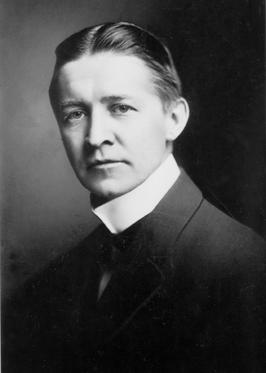
Bertram Grosvenor Goodhue was an American architect celebrated for his work in Gothic Revival and Spanish Colonial Revival design. He also designed notable typefaces, including Cheltenham and Merrymount for the Merrymount Press. Later in life, Goodhue freed his architectural style with works like El Fureidis in Montecito, California, one of three estates he designed.
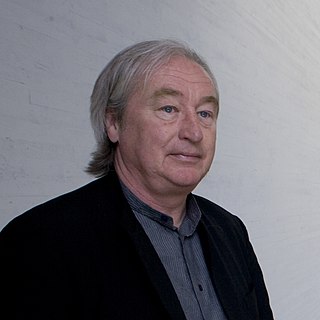
Steven Holl is a New York–based American architect and watercolorist.
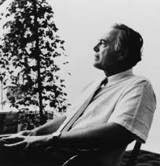
Harry Mohr Weese was an American architect who had an important role in 20th century modernism and historic preservation. His brother, Ben Weese, is also a renowned architect.
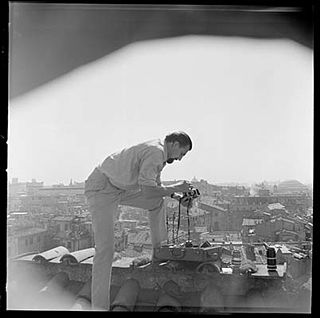
Balthazar Korab was a Hungarian-American photographer based in Detroit, Michigan, specializing in architectural, art and landscape photography.

Pei Cobb Freed & Partners is an American architectural firm based in New York City, founded in 1955 by I. M. Pei and other associates. The firm has received numerous awards for its work.

Edward Larrabee Barnes was an American architect. His work was characterized by the "fusing [of] Modernism with vernacular architecture and understated design." Barnes was best known for his adherence to strict geometry, simple monolithic shapes and attention to material detail. Among his best-known projects are the Haystack School, Christian Theological Seminary, Dallas Museum of Art, the Walker Art Center, 599 Lexington Avenue, the Thurgood Marshall Federal Judiciary Building, and the IBM Building at 590 Madison Avenue.

Fentress Architects is an international design firm known for large-scale public architecture such as airports, museums, university buildings, convention centers, laboratories, and high-rise office towers. Some of the buildings for which the firm is best known include Denver International Airport (1995), the modernized Tom Bradley International Terminal at LAX (2013), the National Museum of the Marine Corps near Quantico, Virginia (2005), and the Green Square Complex in Raleigh, North Carolina (2012).
HED (formerly Harley Ellis Devereaux) is an architecture and engineering firm based in Royal Oak, Michigan with offices in Royal Oak, Chicago, Illinois, Los Angeles, Sacramento, California, San Diego, Denver, Colorado, Dallas, Texas, Boston, Massachusetts and San Francisco, California. The firm was founded in 1908 by architects Alvin E. Harley and Norman S. Atcheson.

Wiss, Janney, Elstner Associates, Inc. (WJE) is an American corporation of architects, engineers, and materials scientists specializing in the investigation, analysis, testing, and design of repairs for historic and contemporary buildings and structures. Founded in 1956, WJE is headquartered in Northbrook, Illinois, and has over 600 professionals in twenty offices across the United States. WJE personnel are specialized in architectural, structural, and civil engineering; materials conservation, chemistry and petrography, and testing and instrumentation.
Esherick Homsey Dodge and Davis is a United States–based architecture, interiors, planning and urban design firm. EHDD is ranked among the top 20 architecture firms in the San Francisco Bay Area where it is headquartered, and is recognized for collaboration, commitment to innovation and investigation, and responsiveness to location, light, and climate.
Bartholomew Voorsanger is an American architect.
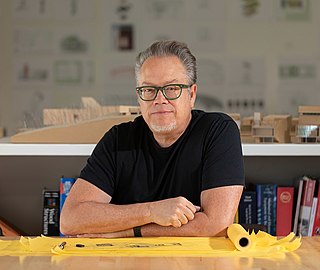
Marlon Blackwell is an American architect and university professor in Arkansas. He is a Fellow of the American Institute of Architects.
Guy Nordenson is a structural engineer and professor of structural engineering and architecture at Princeton University School of Architecture. Guy has two children, Pierre and Sebastien Nordenson. He attended the Massachusetts Institute of Technology, graduating with a Bachelor of Science in Civil Engineering in 1977, followed by a Masters of Science in Structural Engineering and Structural Mechanics from the University of California at Berkeley in 1978. After graduating from UC Berkeley he worked at Forell/Elsesser Engineers in San Francisco (1978-1982) and Weidlinger Associates in New York City (1982–1987), before establishing the New York office of Ove Arup & Partners in 1987 where he was a director until leaving in 1997 to begin his own structural engineering practice, Guy Nordenson and Associates.
Ann Beha is an American architect. She is founder and partner of Ann Beha Architects in Boston, Massachusetts.
Bernardo Fort-Brescia is a US-based Peruvian businessman and architect. He is the co-founder of the architectural firm Arquitectonica. He is a fellow of the American Institute of Architects (AIA). He won the AIA Silver Medal. He is also an heir to Grupo Breca.